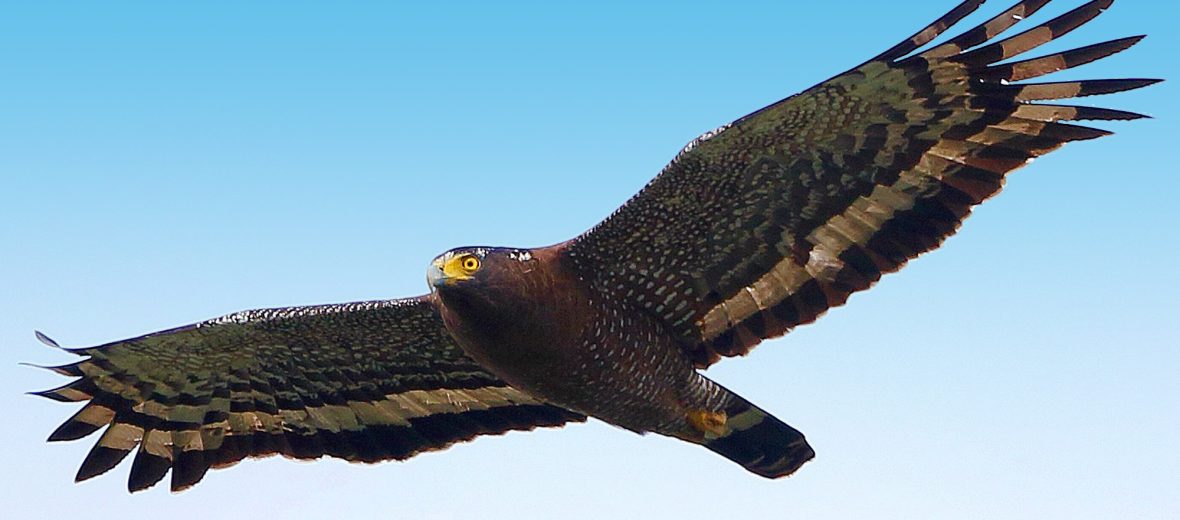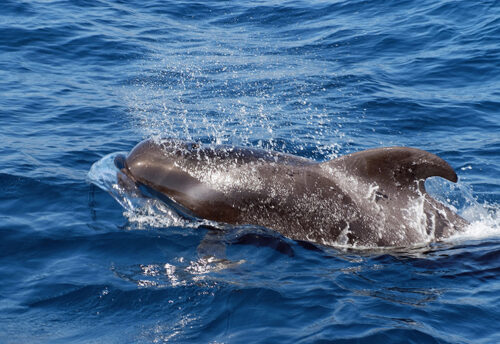
The crested serpent eagle hails from central and southern Asia on down throughout Australasia. They prefer tropical forest habitats. These birds of prey are abundant throughout their ranges and have a stable population. The IUCN lists these cool critters as Least Concern, with their primary threat being that of habitat loss.
First the Stats…
Scientific name: Spilornis cheela
Weight: Up to 4 lbs.
Length: Up to 2.5 feet
Wingspan: Up to 5.7 feet
Lifespan: Up to 50 years
Now on to the Facts!
1.) Crested serpent eagles are reptile hunters that prey on lizards and snakes. Occasionally they may also prey on amphibians, mammals, other birds, and even fish.
2.) These birds are diurnal (active during the day).
3.) Numerous endoparasitic nematodes have been found in the intestines of some of these eagles.
4.) Their call sounds like a “kluee-wip-wip.”
5.) It has been discovered that tits will often build a nest in close proximity to crested eagle nests. It is presumed that this is due to the provided safety from predatory birds that might otherwise hunt the tits.
But wait, there’s more on the crested serpent eagle!
6.) Nests are sometimes reused, in some locations. In others, new nests are built each season.
7.) Females lay up to 2 eggs, each season. Eggs take up to 41 days to hatch.
Did you know…?
The crested eagle can fly at speeds of up to 100 mph!
8.) Only 1 chick ever makes it to adulthood.
9.) The chick will fledge in about 60 days.
10.) Another name for this bird of prey is lang kuik.
Now a Short Crested Serpent Eagle Video!
Be sure to share & comment below! Also, check out the Critter Science YouTube channel. Videos added regularly!
Want to suggest a critter for me to write about? Let me know here.



